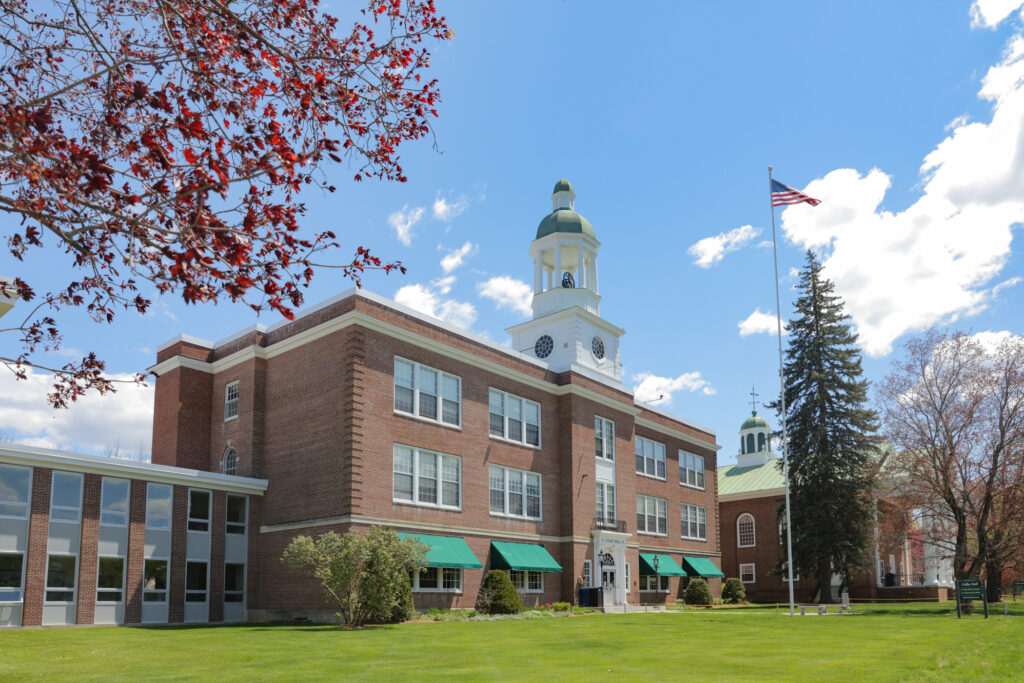Switching Gears

The following message was part of a Chapel Talk delivered last week by Binaca Hanson, Assistant Headmaster for Academic and Student Life, about her experience supporting an English class. Students wrote instructions about how to repair a flat bike tire, and Ms. Hanson followed them. The students’ only requirement? The test user had no prior experience repairing a tire. Read more to learn how it went.
Last week, I received an email from Mr. Dussault that read: My B block students are working on written instructions for how to repair a flat bike tire this week. I am looking for anyone who might not have experience with this task to serve as a test user of their instructions, which they are going to revise after the test. I expect that this would be no longer than a 30-minute commitment, starting at 9:45 am. Would you be interested in doing this?
I responded Yes, of course! I was completely qualified to be unqualified.
When I told my husband about the invitation that night, he was full of questions: Is the tire on the bike? Does the tire have a tube? Is it a new tire or an old tire? I shrugged at each question. I didn’t just lack the skills to repair the tire; I didn’t even know the right questions to ask.
My husband suggested I could watch YouTube videos or practice on a bike tire at home over the weekend. He mentioned something about a “bead lock” being hard to break. I just stared at him and decided I would cut my nails so that I wouldn’t break a nail while breaking whatever a bead lock was.
Yesterday, as I got ready for work, I gave myself a little pep talk. I reminded myself that my complete ignorance about repairing a flat bicycle tire wasn’t a problem to fix; instead, it was precisely what would make me valuable to the students.
As I walked to the Ranger classroom, nervousness set in.
When I arrived, I shared how I felt with Mr. Dussault and the students. One student looked at me and said, “What do you have to be nervous about? It’s not like this is your way home.” Fair enough.
Mr. Dussault handed me the packet—neatly typed instructions with reference photos. It looked professional and organized.
I read Step 1: “Undo the valve stem (place cap in secure spot) and break the bead lock off.”
I successfully removed the cap and put it in my pocket.
“Is there a vocabulary sheet?” I asked. I was on step one, and I was already lost. That was the moment that the class realized that Mr. Dussault had gone to great lengths to find them someone who was extra qualified in being unqualified.
The directions had vocabulary that was familiar to everyone else in the room, but meaningless to me. In that moment, they discovered something crucial: expert knowledge sometimes includes enough vocabulary to seem like a whole new language for a beginner.
Step 2 said: “Remove the bead lock. Place one part of the lever on a spoke and push the lever forward, and it should break the seal between the tire and bead lock.”
The picture was somewhat helpful, but that word “should” – it was key. “It should break the seal…”. It should break the seal if you are using the lever properly – which, if you’re me, you failed to do in several unique ways.
At one point, in the process, I looked up and asked the class, “People actually fix something like this in the woods?!” Mr. Dussault assured me that yes, he’d done this repair in the wilderness; not only that, but he carried the gear with him to do it. He just toted around levers, glue, and patches in a pack. Then he leveled up and told me that he once fixed a flat bike tire with nothing but leaves. Leaves. Now that I understood Mr. Dussault is some sort of bike repair MacGyver, I felt the need to tell the class that, left to my own devices in the woods, a bear would surely eat me before I could fix a flat bike tire on my own.
Throughout the process, I needed help from both the students and Mr. Dussault. I am grateful that they were kind, encouraging, and patient. The issues weren’t entirely because their directions compressed steps. It became clear to the students that the gap between knowing how to do something and being able to teach it to a complete beginner was much larger than they might have expected.
When I finally got the tube patched and the wheel reassembled, I felt genuinely proud. I had done it—though I couldn’t have done it by myself, and certainly not from written directions alone. I think my lack of knowledge showed them how much crucial information lived in their heads and not in their words.
Learning requires a willingness to be confused, to ask questions that might seem obvious, and to persist through the discomfort of not knowing. I could have watched YouTube videos beforehand, but that shortcut would have changed all our learning during the class. My expertise, or lack thereof, brought authenticity.
This experience reminded me of what it feels like to be genuinely incompetent at something, to have to ask for help with the most basic elements, and to struggle with unfamiliar vocabulary. The courage to say “I have no idea” opens learning opportunities that expertise can close off. The students’ imperfect directions were perfect teachers. They forced everyone in the room to think about the real challenges of learning and communication. Sometimes the best education doesn’t come from having the right answers, but from discovering the right questions.
Since all good stories come full circle – see what I did there – I thought I would share what happened when I got home last night. My husband went out for a bike ride before I got home from work. When he returned, he walked in the door and announced that he’d gotten a flat tire while he was riding— and it was, in fact, his ride home! I didn’t offer to help him repair it – he was probably just fine without any help from me.



